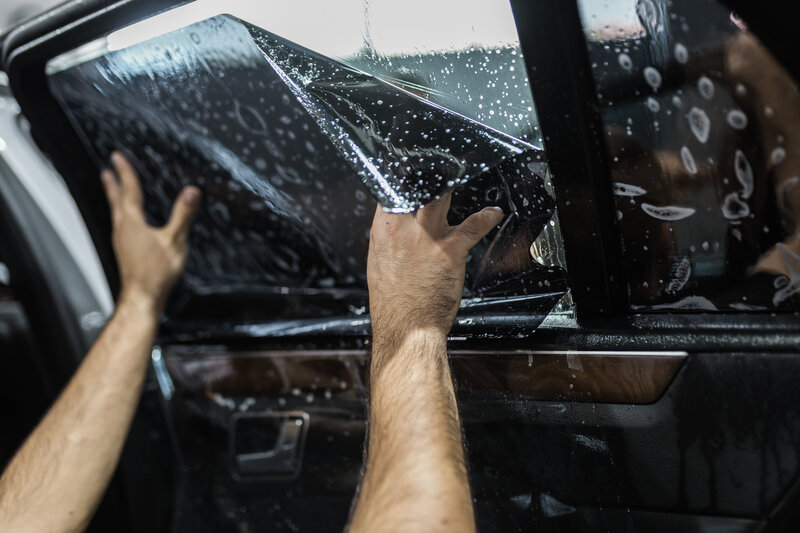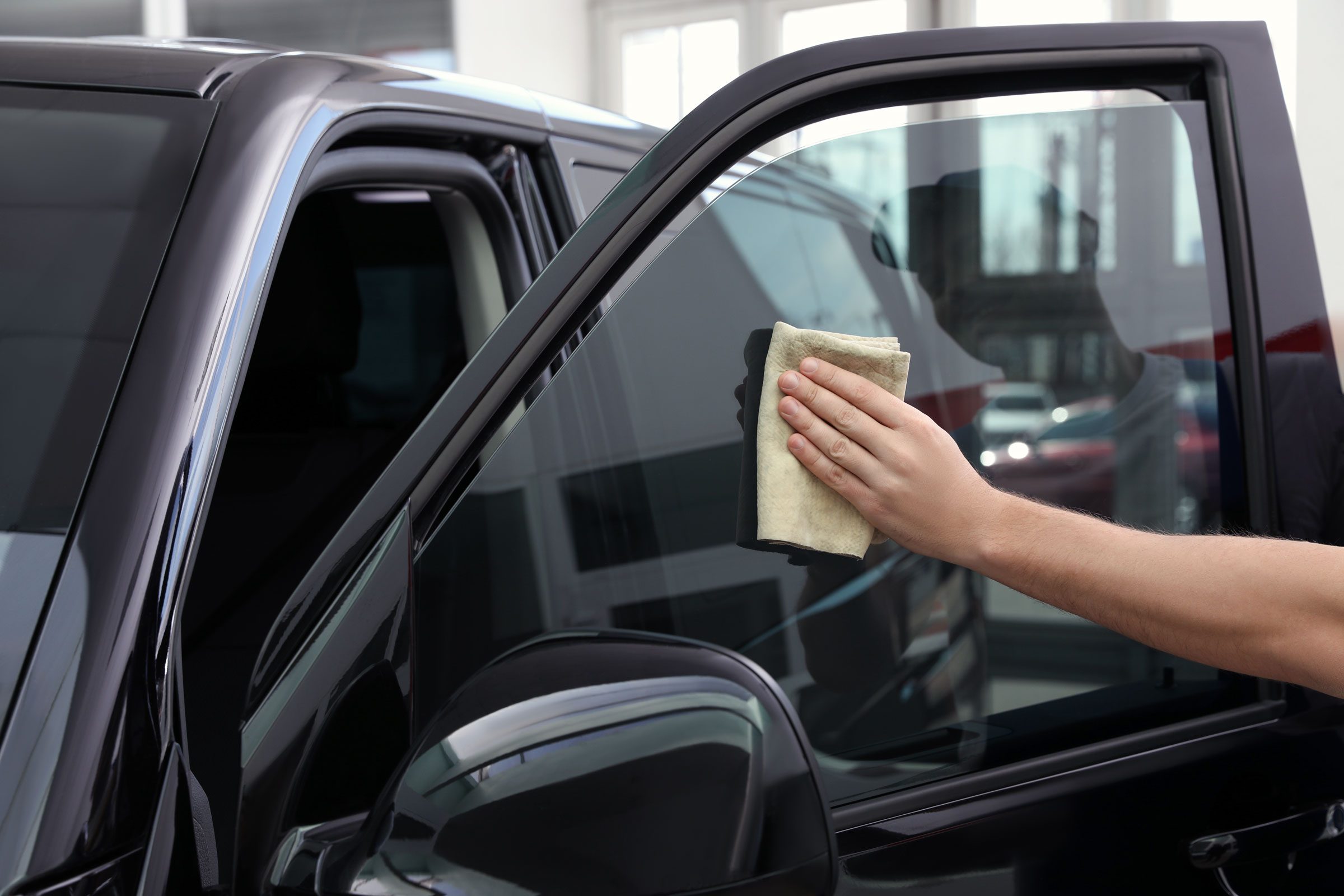How to Maintain Your Window Tinting and Keep It Looking Like New
Wiki Article
Window Tinting Options: Locate the Right Shade for Your Design and Demands
Choosing the appropriate window tint for your vehicle entails a mindful consideration of various variables, consisting of personal aesthetics, useful demands, and lawful limitations. With options varying from light tintss that supply marginal personal privacy to darker shades that improve seclusion, the selections can be overwhelming.Recognizing Window Tinting Degrees
When thinking about window tinting, it is crucial to comprehend the numerous degrees of tint available, as they significantly impact both visual appeals and capability. Window tinting is classified based on Noticeable Light Transmission (VLT) percents, which suggest the quantity of light allowed to travel through the glass. The VLT percentage can vary from really light (over 70%) to very dark (listed below 5%)The primary levels of tint consist of clear, which provides UV defense without changing presence; light tint (over 50% VLT), which somewhat lowers glare while preserving presence; medium tint (around 35% VLT), striking an equilibrium in between privacy and light transmission; and dark tint (listed below 20% VLT), supplying significant privacy and warmth reduction but limiting exterior visibility.
Understanding these degrees is crucial as they can impact driving security, legal compliance, and personal convenience. In addition, local policies commonly determine permitted tint levels, varying by state or town. Consequently, before choosing a color, it is suggested to study and ensure adherence to these policies while thinking about personal preferences for style and practical benefits.
Popular Tint Tone Explained

Among the most preferred options is the traditional dark tint, typically ranging from 20% to 5% VLT (Noticeable Light Transmission) This shade provides optimum privacy and a smooth, innovative look. It efficiently obstructs UV rays and warmth, making it optimal for bright climates, though it might restrict visibility at evening.
Alternatively, lighter shades such as 35% or 50% VLT offer a much more refined appearance while still providing some degree of personal privacy. These tones are best for those seeking a balance in between visual appeals and performance, as they enable better visibility and follow different lawful criteria.
An additional emerging choice is the ceramic tint, which can can be found in a selection of shades - window tinting. It offers exceptional warm being rejected and UV security without dramatically modifying the vehicle's look

Lawful Regulations for Window Tinting
Understanding the legal regulations surrounding window tinting is important for automobile owners seeking to customize their cars and trucks. Each state in the U.S. has certain laws regulating the darkness or agility of window tintss, often measured by Visible Light Transmission (VLT) portion. VLT describes the quantity of light that can go through the glass and the film integrated.In several states, regulations dictate various VLT percents for various windowss, consisting of front windscreens, side windowss, and rear windowss. As an example, some states might allow a tint of 70% VLT for windscreens while allowing darker tintss for back windowss. In addition, particular states have constraints on reflective tintss, which can develop glare for other chauffeurs.
Failing to comply with these policies can result in fines, mandated elimination of the tint, and boosted insurance policy costs. Vehicle owners ought to speak with regional legislations or state DMV web sites to guarantee they are within lawful limits before proceeding with setup. Comprehending these policies not only assists prevent legal repercussions but also ensures a safe driving experience.
Benefits of Various Tint Materials
Discovering the benefits of numerous tint products exposes considerable advantages that can enhance both the functionality and visual allure of an automobile. Each material offers distinctive features matched to certain requirements and preferences.Dyeded window films are popular for their price and capability to minimize glare. They effectively block UV rays, protecting the inside from fading, though they may not supply the highest heat rejection. Metalized films, on the other hand, offer superior warm reduction and UV defense as a result of their reflective residential or commercial properties. They can next page enhance privacy and security but might disrupt digital signals.
Ceramic window films stand for a premium alternative, offering check over here exceptional warmth rejection while keeping visibility. They are non-metallic, hence staying clear of any signal disturbance, and are highly long lasting, resisting scrapes and fading over time. Furthermore, ceramic films do not include dyes, making certain a longer-lasting appearance.
Last but not least, hybrid films integrate aspects from dyeded and metalized options, providing a well balanced performance in terms of warmth rejection, glare decrease, and price. Each tint material offers unique functions, allowing car proprietors to pick the very best fit for their way of living and visual preferences, ultimately improving their driving experience.
Picking the Right Tint for You
Finding the right window tint includes considering different aspects, including personal preferences, automobile kind, and neighborhood regulations. First, evaluate your individual design and wanted level of privacy, as these will certainly assist your selection of tint shade. Darker tintss provide enhanced privacy but may not be appropriate for all motorists, especially those that like an even more open feel inside their car.Next, consider your car kind, as the dimension and form of windowss can influence the efficiency of specific tintss. For instance, larger windowss might profit from reflective tintss that minimize glare while smaller windowss could be extra matched to dyeded films that provide subtle visual appeals.
Additionally, it's crucial to examine regional regulations pertaining to window tinting. Several states enforce constraints on the permitted darkness and reflectivity, especially for front windowss. Conformity with these laws is important to stay clear of fines and make certain safety.
Finally, assess the tint material that ideal fits your demands. Options consist of dyeded, metalized, ceramic, and hybrid films, each offering distinct advantages connecting to warm denial, UV security, and durability. By thinking about these elements, you can with confidence choose a home window tint that aligns with your style and useful requirements.
Final Thought
Finally, selecting the proper window tint requires careful factor to consider of numerous aspects, consisting of VLT over here percentages, regional guidelines, and the wanted aesthetic. Different tint products supply unique benefits that can improve automobile convenience and protection. By thoroughly comprehending the readily available options and aligning them with practical needs and private preferences, one can accomplish an ideal equilibrium in between design and capability in window tinting selections.Picking the suitable window tint for your car includes a cautious consideration of different aspects, including personal looks, useful needs, and lawful constraints. Each state in the United state has certain legislations controling the darkness or agility of window tintss, typically determined by Visible Light Transmission (VLT) portion. Some states may allow a color of 70% VLT for windscreens while allowing darker tintss for rear windowss.Locating the right window tint involves considering numerous aspects, consisting of personal preferences, lorry type, and local regulations.In verdict, choosing the appropriate window tint calls for careful consideration of various elements, consisting of VLT percents, regional policies, and the desired visual.
Report this wiki page